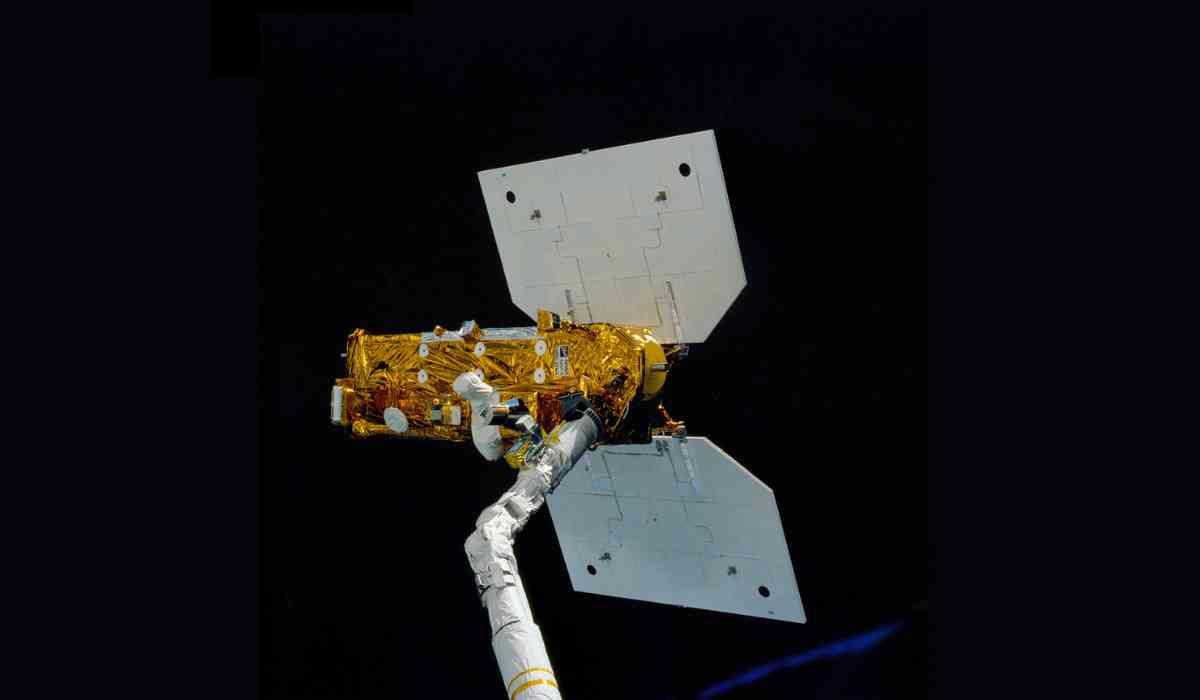Yes, on Sunday evening (Jan. 9), a defunct NASA satellite is anticipated to reenter Earth's atmosphere. The Earth Radiation Budget Satellite (ERBS), which has a mass of 5,400 pounds (2,450 kilogrammes), will return to Earth on Sunday at around 6:40 p.m. EST (2340 GMT), plus or minus 17 hours.
"NASA expects the majority of the satellite to burn up as it goes through the atmosphere, but some components are anticipated to survive the reentry, according to an update published on Friday night (Jan. 6)." It is implausible that it harms anyone on the Earth; the probability is only one in 9,400."

In 1984, NASA's three-satellite Earth Radiation Budget Experiment mission launched ERBS into low Earth orbit aboard the Challenger spacecraft. ERBS used three scientific instruments to investigate how our planet reflects and absorbs solar energy. It was meant to work for two years, but it continued until 2005 when it became a massive piece of space junk.
Drag has been pulling the spacecraft down gradually ever since.

It is common for satellites to reach the end of their operational life and be decommissioned or inactive. Here is a list of 10 decommissioned or inactive NASA satellites:
Kepler Space Telescope: Launched in 2009, the Kepler Space Telescope was designed to search for exoplanets (planets outside our solar system). It was decommissioned in 2018 after its fuel ran out.
Chandra X-Ray Observatory: Launched in 1999, the Chandra X-Ray Observatory was a space telescope designed to study high-energy X-ray emissions from celestial objects. It is currently still in operation.
Spitzer Space Telescope: Launched in 2003, the Spitzer Space Telescope was a space telescope designed to study the infrared radiation emitted by celestial objects. It was decommissioned in 2020.
Mars Reconnaissance Orbiter: Launched in 2005, the Mars Reconnaissance Orbiter is a spacecraft that has been studying the surface, atmosphere, and climate of Mars. It is still in operation.
Dawn: The Dawn spacecraft was Launched in 2007 and designed to study the two most significant objects in the asteroid belt, Vesta and Ceres. It ran out of fuel and decommissioned in 2018.
Lunar Reconnaissance Orbiter: Launched in 2009, the Lunar Reconnaissance Orbiter is a spacecraft studying the Moon's surface and environment. It is still in operation.
Kepler - Launched in 2013, the Kepler spacecraft was designed to study exoplanets and named after the Kepler Space Telescope. It was decommissioned in 2018 after its fuel ran out.
Orion - The Orion spacecraft, launched in 2014, is a crew capsule intended to carry passengers to and from the International Space Station and other locations outside of low Earth orbit. It continues to function.
TESS - Launched in 2018, the Transiting Exoplanet Survey Satellite (TESS) is a space telescope designed to search for exoplanets. It is still in operation.
InSight: Launched in 2018, the InSight spacecraft is a lander that is currently studying the interior of Mars. It is still in operation.

© Vygr Media Private Limited 2022. All Rights Reserved.
























